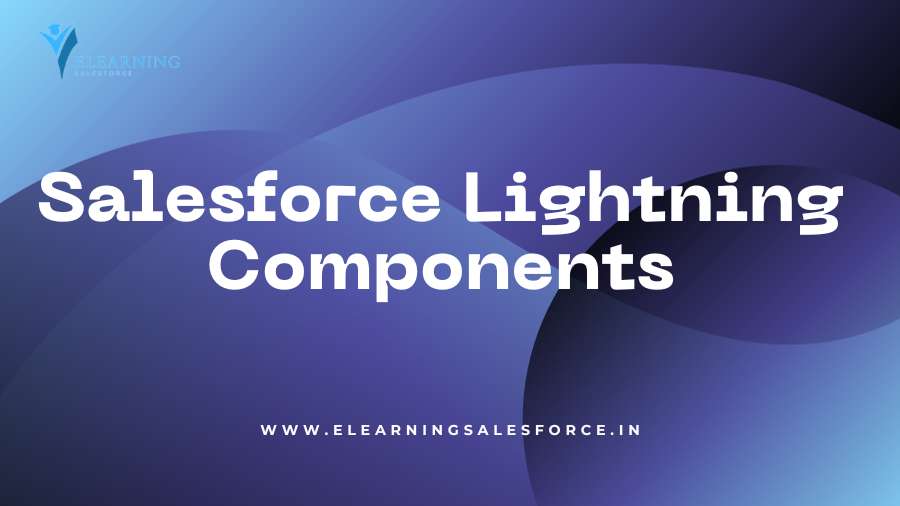Salesforce Lightning Components: In the ever-evolving landscape of Salesforce development, Lightning Components have emerged as a game-changer. Unlike the traditional Salesforce Classic, Lightning Components offer a modern, responsive, and dynamic user interface, elevating the overall user experience. Let’s delve into the key features, advantages, and a step-by-step guide to harnessing the power of Salesforce Lightning Components.
Key Features of Salesforce Lightning Components
One of the standout features of Lightning Components is their responsive design. These components seamlessly adapt to various screen sizes, ensuring a consistent and user-friendly interface across devices. The component-based architecture allows developers to build modular, reusable units, promoting efficiency and collaboration. Additionally, the drag-and-drop functionality empowers users to customize their Salesforce experience effortlessly.
Advantages of Using Lightning Components
The benefits of adopting Lightning Components are multifaceted. Users witness a marked improvement in their experience, thanks to the responsive design and intuitive interface. Developers, on the other hand, enjoy faster development cycles and enhanced customization capabilities. Lightning Components pave the way for a more agile and efficient development process.
Getting Started with Lightning Components
For those embarking on their Lightning Components journey, the first step involves setting up a Lightning development environment. Salesforce provides robust tools and documentation to facilitate this process. Once set up, creating your inaugural Lightning component becomes an exciting venture, offering a hands-on introduction to the world of dynamic web development within the Salesforce ecosystem.
Building Lightning Components: A Step-by-Step Guide
Building Lightning Components involves mastering key concepts such as defining component attributes, handling events, and utilizing Apex controllers. Each step is crucial, and our step-by-step guide ensures that developers, whether novice or experienced, can navigate the intricacies of Lightning Component development with ease.
Best Practices for Lightning Component Development
As with any development framework, adhering to best practices is paramount. Design considerations, optimization tips, and strategies for reusability and scalability form the bedrock of efficient Lightning Component development. Following these guidelines ensures that your components not only function seamlessly but also contribute to a robust and maintainable codebase.
Common Challenges in Lightning Component Development
While the benefits are numerous, developers may encounter challenges in the Lightning Component journey. Version compatibility issues, debugging, and handling dynamic data are common stumbling blocks. Understanding these challenges and employing effective troubleshooting strategies is key to overcoming them.
Integration of Lightning Components with Salesforce Applications
The true power of Lightning Components shines when seamlessly integrated with Salesforce applications. Whether enhancing existing workflows or synchronizing data in real-time, Lightning Components provide a versatile toolkit for developers to elevate the capabilities of their Salesforce solutions.
Case Studies: Success Stories with Lightning Components
Real-world applications of Lightning Components abound. Success stories from various industries showcase how businesses have leveraged these components to streamline processes and achieve tangible results. These case studies serve as inspiration for developers seeking to harness the full potential of Lightning Components.
Future Trends in Salesforce Lightning Components
As technology continues to advance, so does Salesforce Lightning. Continuous innovation, community-driven development, and industry-specific applications mark the future trends in Lightning Components. Staying abreast of these trends positions developers to be at the forefront of digital transformation within the Salesforce ecosystem.
Tips for Effective Testing of Lightning Components
No development process is complete without rigorous testing. Our guide offers tips on unit testing strategies, debugging tools, and ensuring cross-browser compatibility, ensuring that your Lightning Components perform reliably in any environment.
Security Considerations in Lightning Component Development
Security is paramount in any development endeavor. Preventing common vulnerabilities, implementing access controls, and safeguarding data are integral aspects of Lightning Component development. Developers are encouraged to adhere to best practices for secure coding to protect their applications and users.
Resources for Learning and Improving Lightning Component Skills
Continuous learning is key in the ever-evolving world of technology. Salesforce’s Trailhead platform, community forums, and external training programs offer a wealth of resources for developers to enhance their Lightning Component skills. Whether a beginner or an experienced developer, there is always room for improvement and exploration.
The Role of Lightning Components in Digital Transformation
The transformative impact of Lightning Components extends beyond development processes. These components play a pivotal role in streamlining business processes, enhancing customer engagement, and adapting to changing market demands. Embracing Lightning Components becomes a cornerstone in driving digital transformation within organizations.
Conclusion
In conclusion, Salesforce Lightning Components stand as a testament to the constant evolution of the Salesforce platform. The journey from Classic to Lightning has been transformative, offering users and developers a robust, dynamic, and efficient environment. As we navigate the intricacies of Lightning Component development, let’s continue to explore, innovate, and leverage this powerful framework to its fullest potential.
FAQs
- Is Salesforce Lightning only for developers?
- No, Salesforce Lightning is designed to benefit both developers and non-developers. The intuitive interface allows users to customize their experience, while developers can leverage its powerful capabilities for custom app development.
- What makes Lightning Components responsive?
- Lightning Components are responsive due to their adaptive design, ensuring a seamless user experience across various devices and screen sizes.
- How can I stay updated on the latest trends in Lightning Components?
- Stay connected with the Salesforce community, regularly check Trailhead for updates, and participate in industry events to stay informed about the latest trends in Lightning Components.
- Are Lightning Components secure?
- Yes, Lightning Components prioritize security. Developers should follow best practices for secure coding to enhance the security of their components.
- Can Lightning Components be integrated with third-party applications?
- Yes, Lightning Components can be integrated with third-party applications, providing a versatile solution for businesses with diverse software needs.
